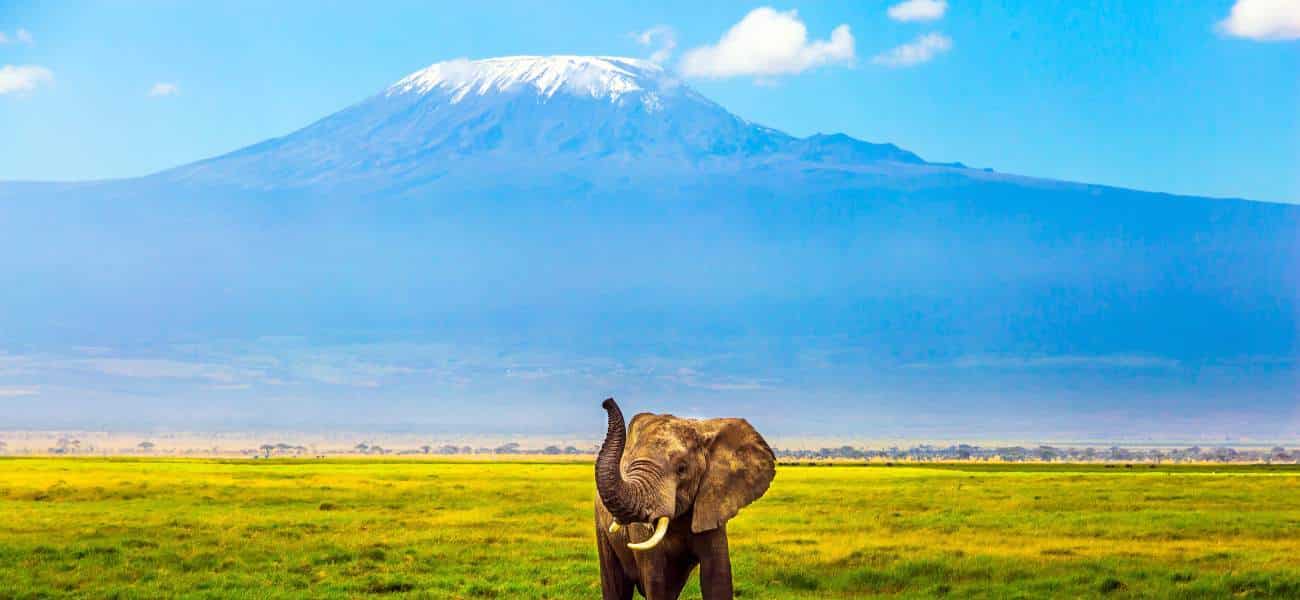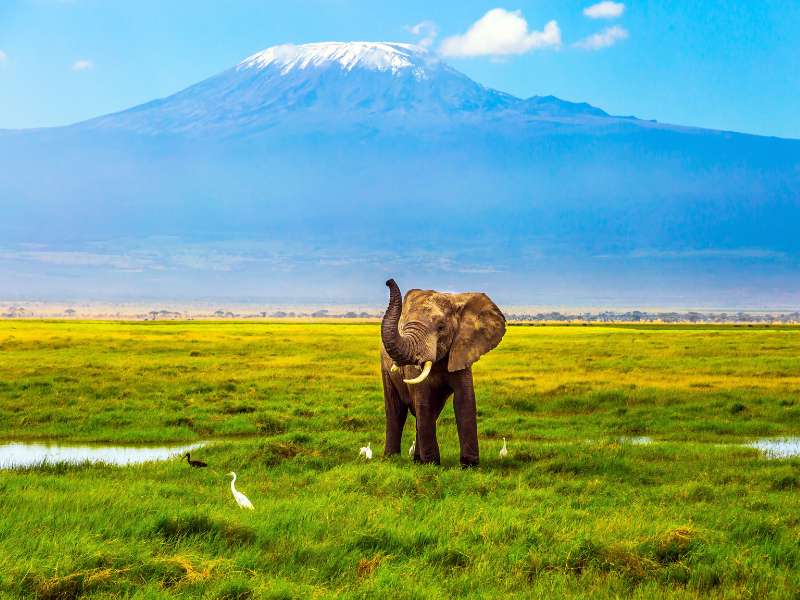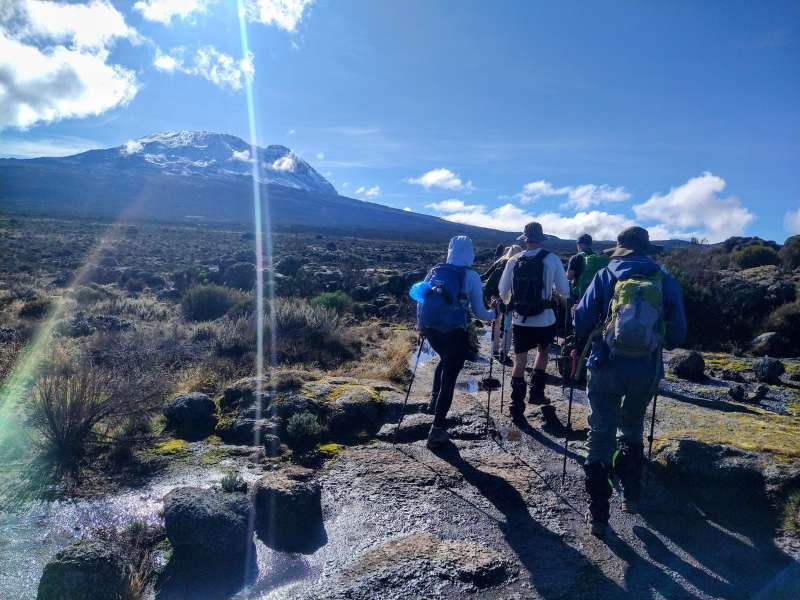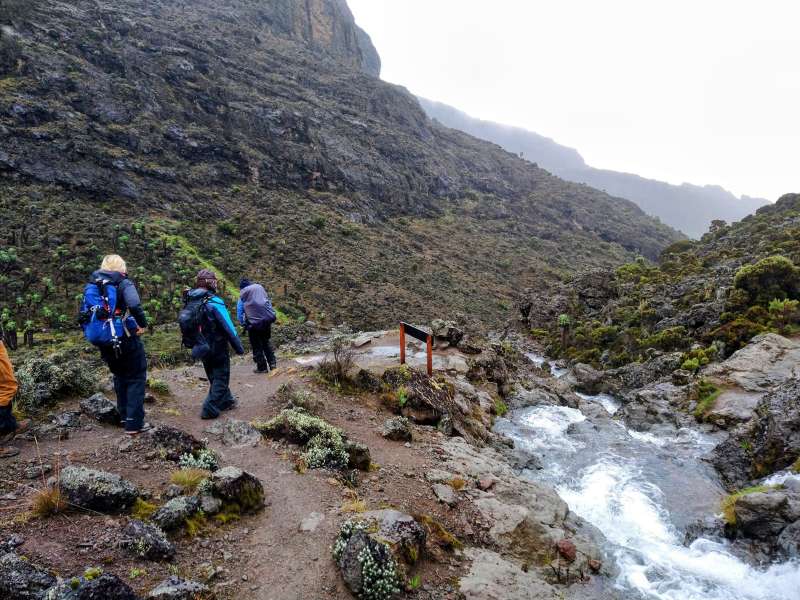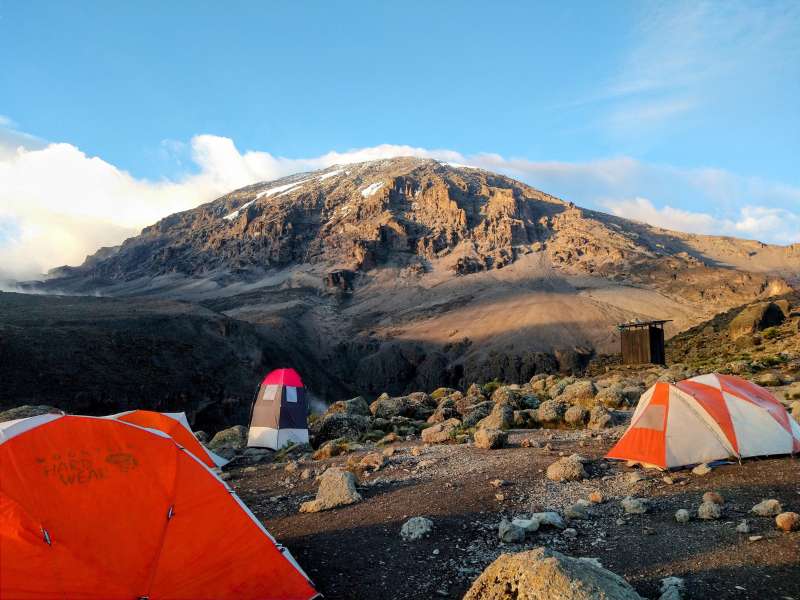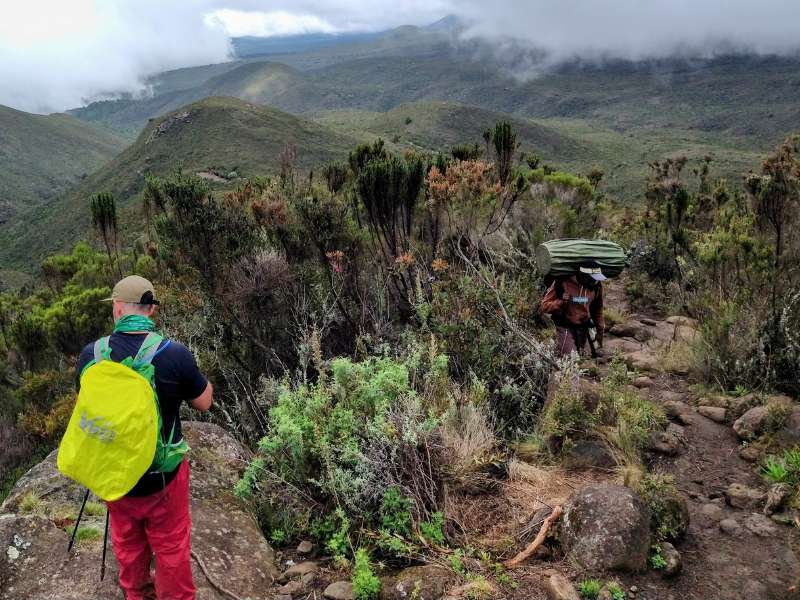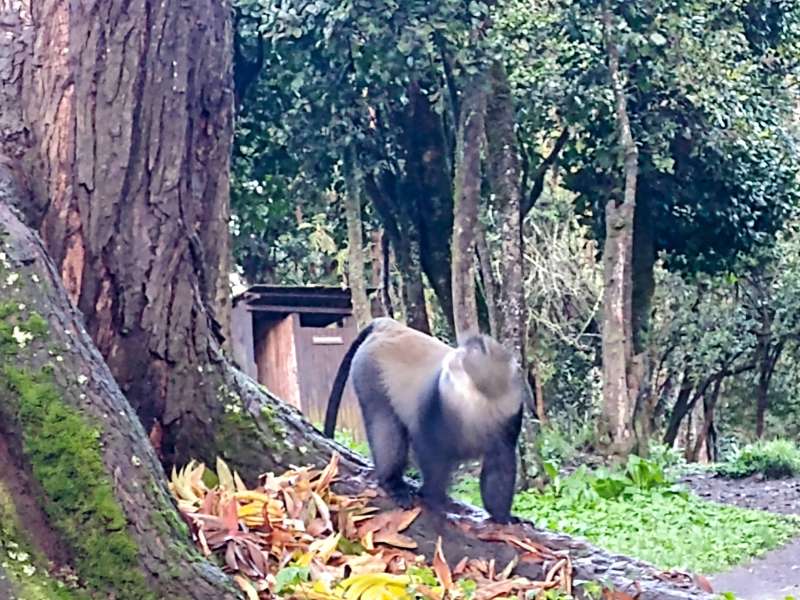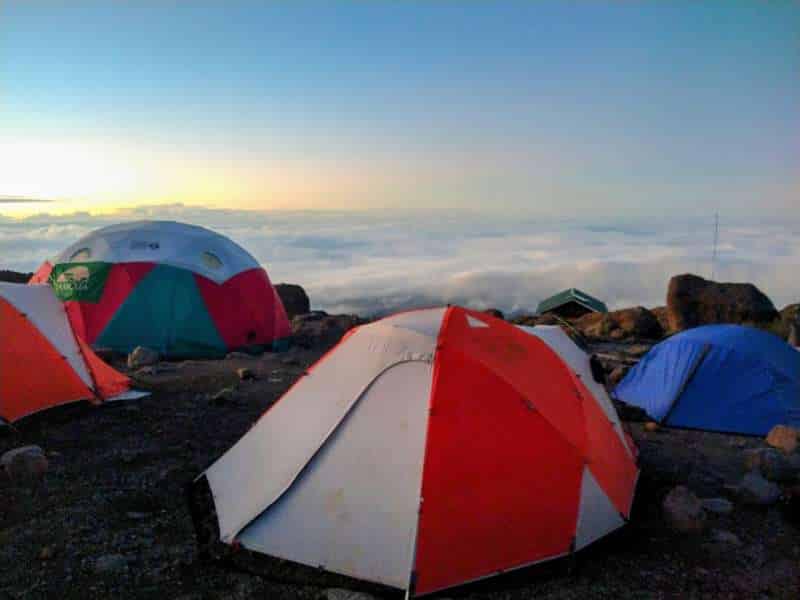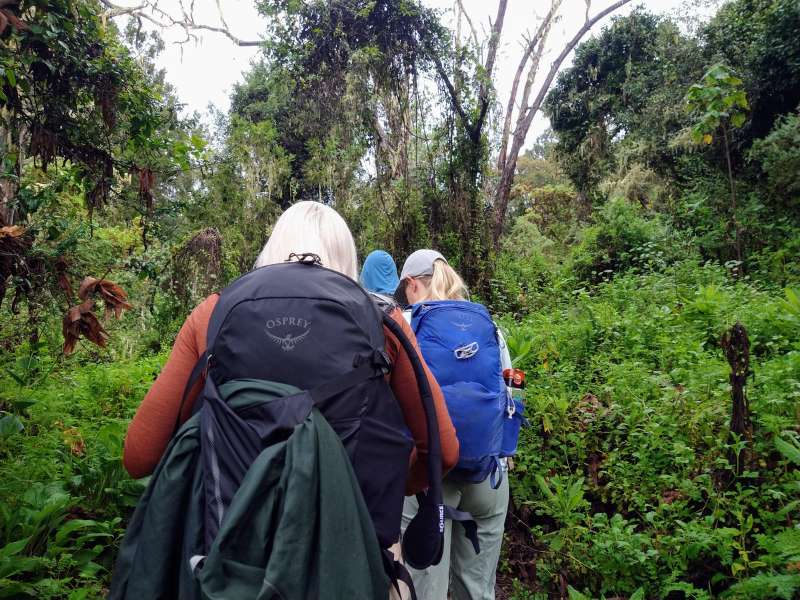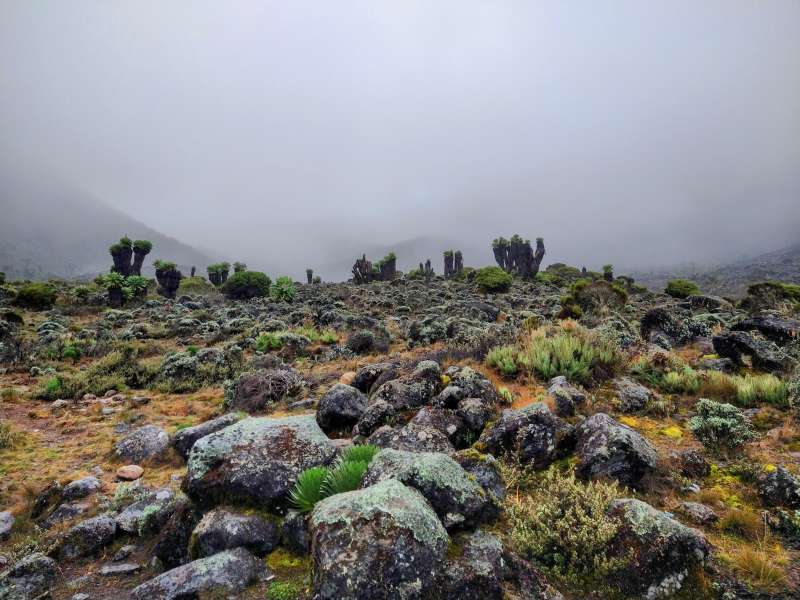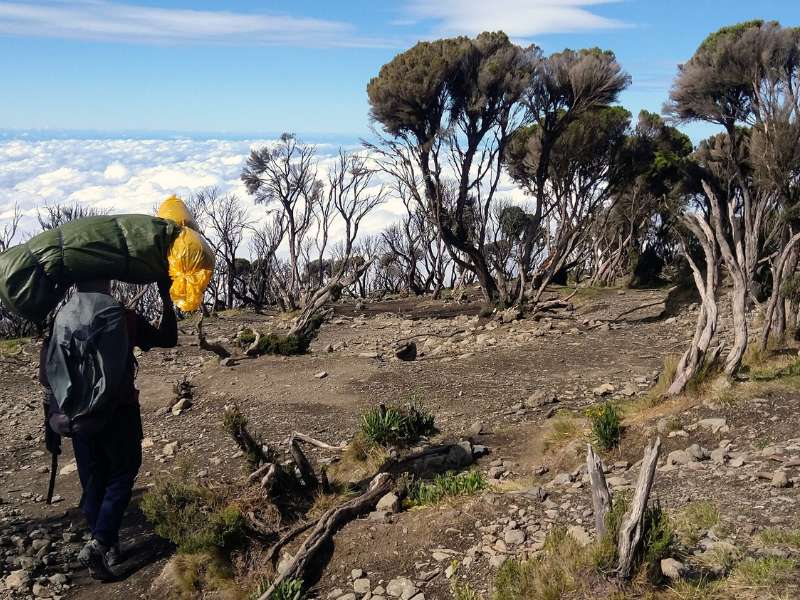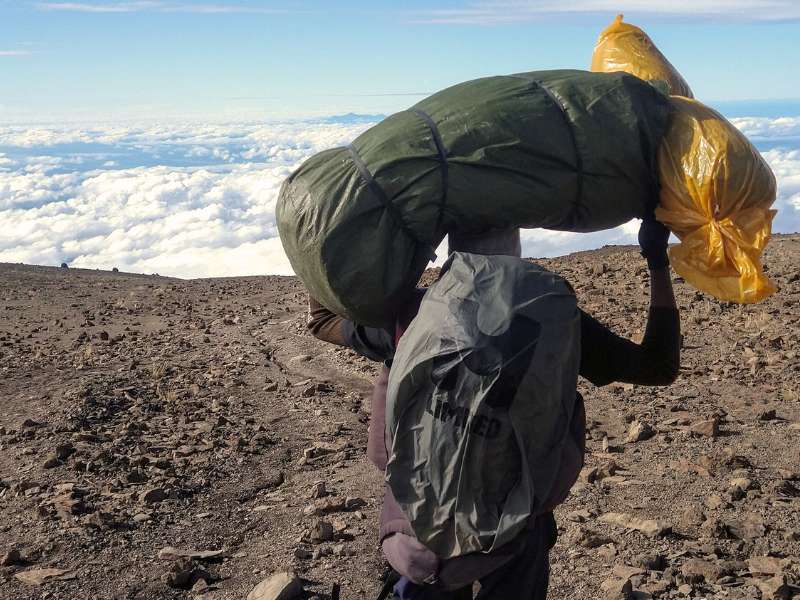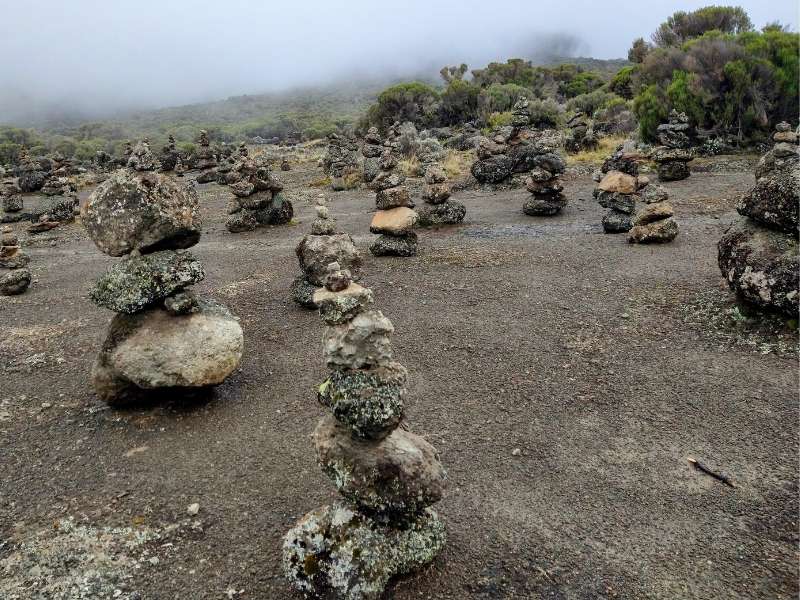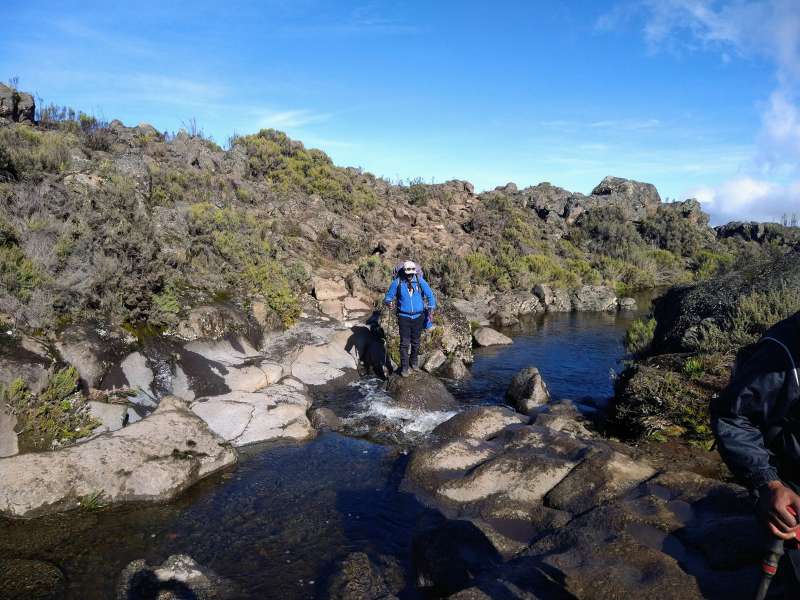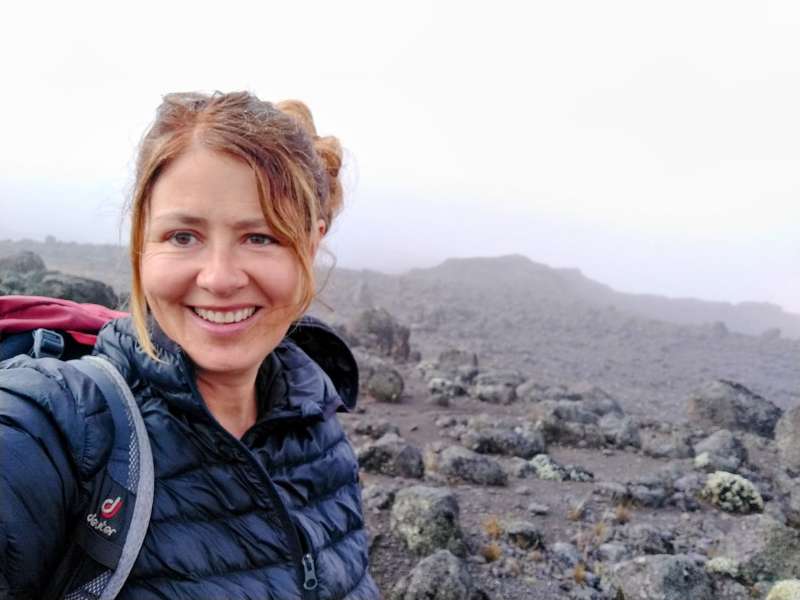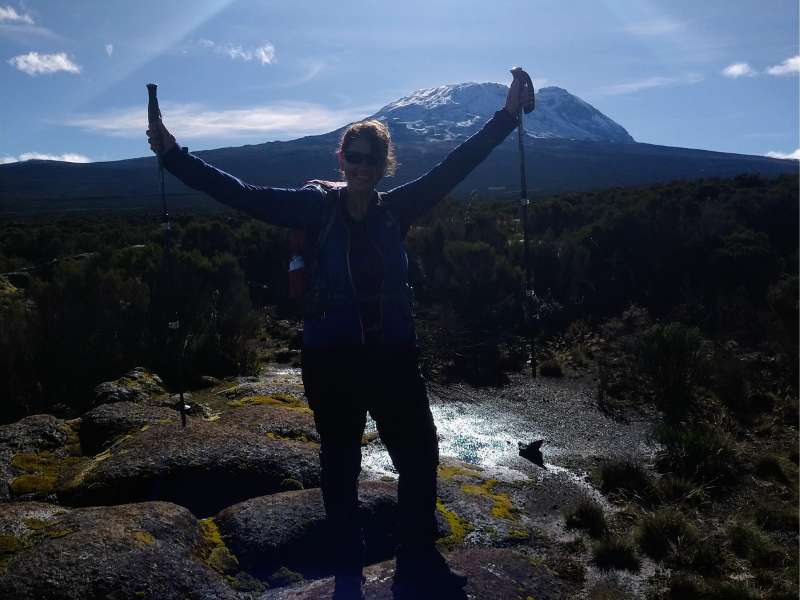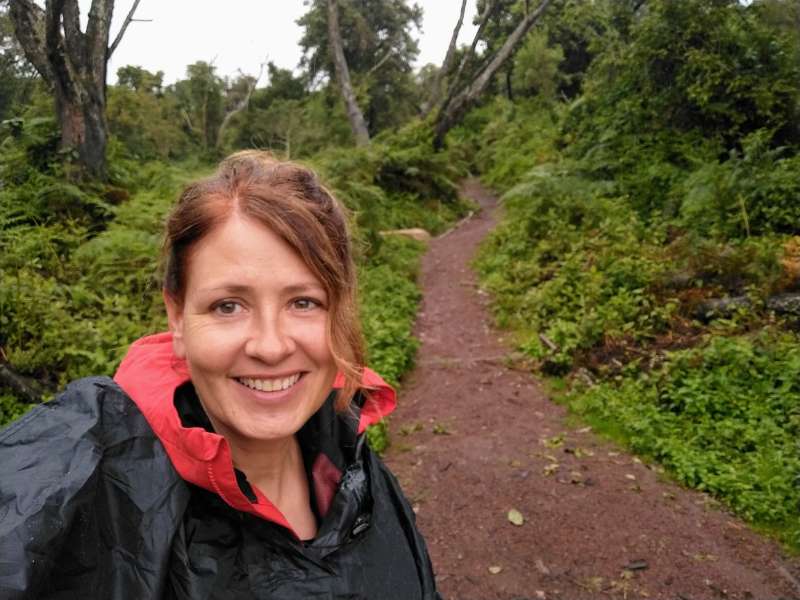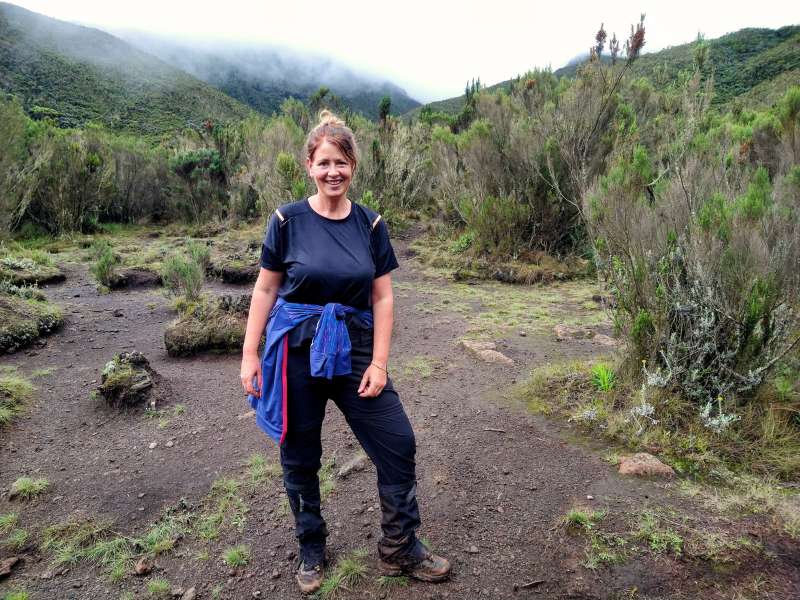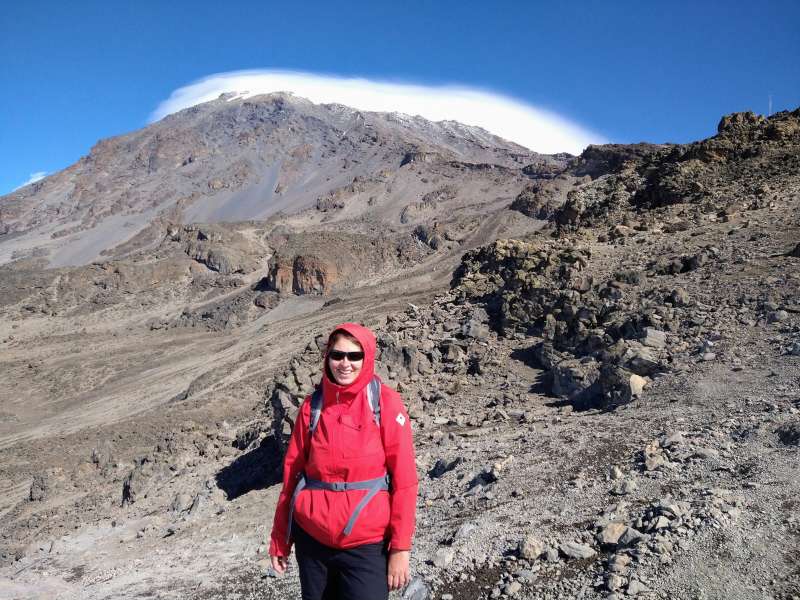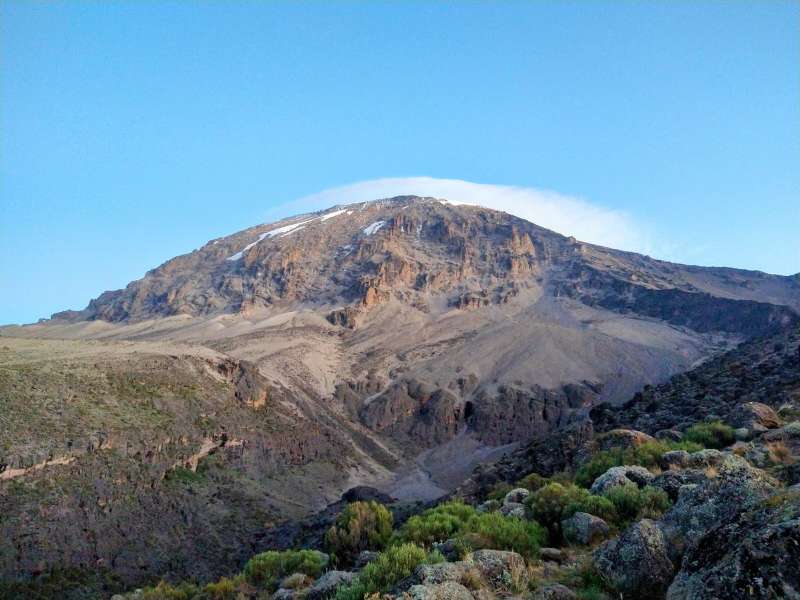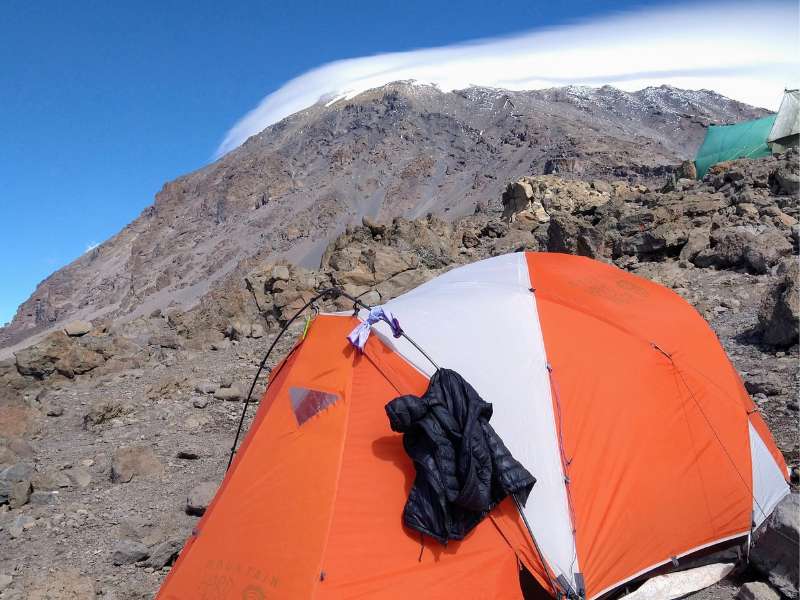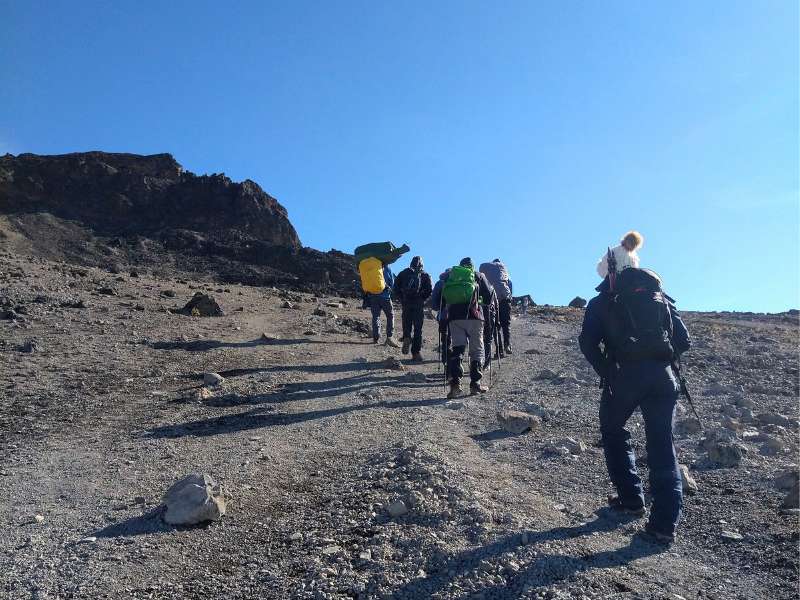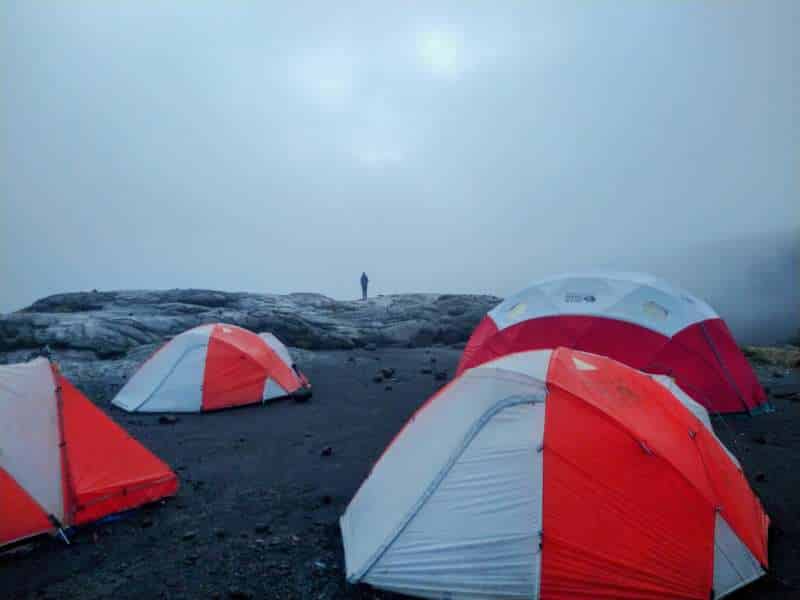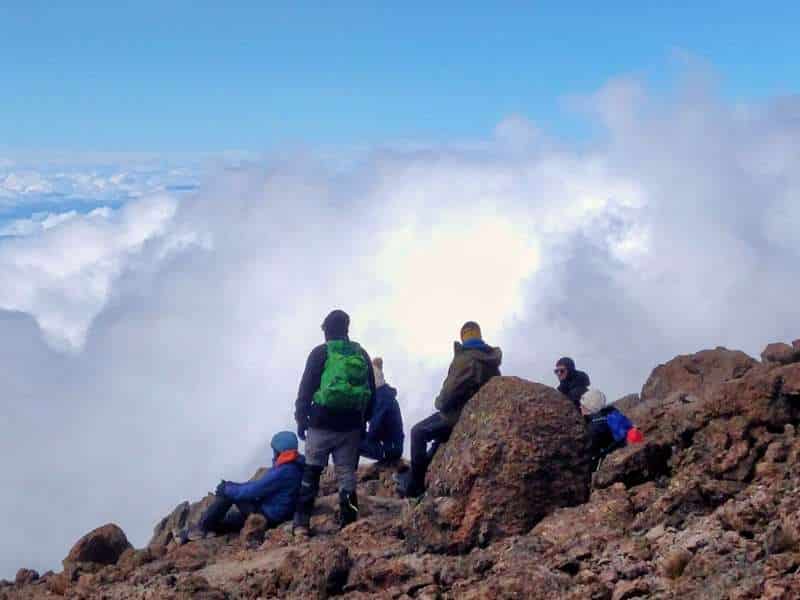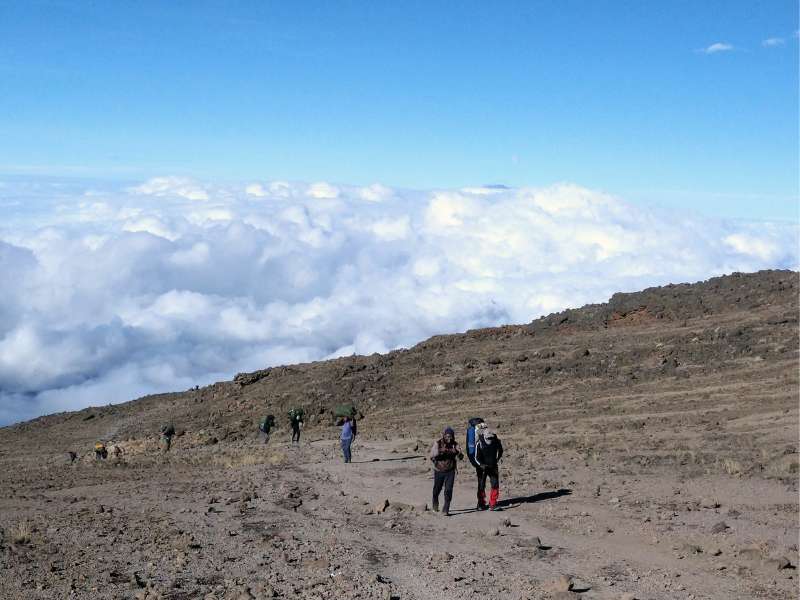KILIMANJARO TOUR OVERVIEW
Imagine standing atop Africa’s highest peak, the world’s tallest freestanding mountain, beneath you bathed in the golden light of dawn at sunrise, inhaling the crisp, invigorating air.
This isn’t just any journey—it’s the ultimate lifetime experience of reaching the summit of Mount Kilimanjaro, the roof of Africa at 19,341 ft (5895 m) above sea level, an adventure where dreams meet reality.
Why Climb Kilimanjaro?
Kilimanjaro isn’t just a mountain; it’s a mosaic of vibrant ecosystems, starting from a tropical rainforest humming with life, including colobus monkeys and blue monkeys to heath and moorland, to the alpine desert to the haunting beauty of the arctic zone that you reach on summit day.
It’s a journey through diverse ecological landscapes, each with its own story, culminating in the awe-inspiring Uhuru Peak, a place few have the privilege to tread.
Why Choose Us as Your Kilimanjaro Tour Operator
Our experienced mountain guides are the best there are. We’re able to attract the best because we include tips in their salary, guaranteeing them a stable salary, something we feel is responsible to do for the local people and the local economy, and something most other tour operators don’t do.
As we ascend, our friendly guides will be with you every step of the way, sharing insights only years of experience can offer. We’ll navigate routes chosen for their breathtaking views and optimal acclimatization, ensuring your journey is as rewarding as it is safe.
Tailored Kilimanjaro Tours
Whether you’re a seasoned hiker or enjoy taking plenty of time to get to the top, our private tours are crafted to suit your pace and comfort.
Kilimanjaro Routes
There are 7 different routes you can take for your Kilimanjaro Trek, including the Marangu Route (i.e. Coca Cola Route, 5-6 days), Machame Route (i.e. Whiskey Route, 6-7 days), Lemosho Route (7-8 days), Shira Route (6-7 days), Rongai Route (6-7 days), Northern Circuit (8-9 days), Umbwe Route (6-7 days).
Lemosho Route
While we can organize any of these Kilimanjaro expeditions, we think the best option is the Lemosho Route because it’s the most picturesque, offering views of the mountain enroute, and it’s one of the least traversed Mount Kilimanaro climbs to Uhuru Peak, avoiding the crowds, especially at peak times.
It’s our guest’s unanimous favorite as it allows proper time to acclimatize to the extreme elevation and high altitude, contributing to a high summit success rate.
The World’s Highest Free Standing Mountain Awaits
Are you ready to conquer Mt Kilimanjaro and stand atop the highest mountain in Africa? To have an unforgettable experience on a create memories last a lifetime?
Join us on this extraordinary journey, where every step is an achievement, every breath a celebration of life’s grandeur.
Your adventure begins here. Will you take the first step?
KILIMANJARO TOUR ITINERARY: LEMOSHO ROUTE
Day 01: Arrival
Fly to Kilimanjaro International Airport (JRO) where a guide will meet you and take you to your lodge in Arusha. At 4600 ft (1400 metres), it’s a good chance to acclimizate if you’re coming from a lower elevation.
Meals: D (optional, depending on flight time)
Day 02: Preparation Day
After breakfast at your lodge in Arusha, your guide will join you in making preparations for the climb, including walking you through the plans for the days ahead, doing a gear check to ensure that you have all the necessary equipment, and renting equipment if necessary.
This is a day to relax and get ready for your big climb. If you’re feeling energetic, the lodge can organize a small hike for you to a waterfall, for an additional fee.
Dinner will be at your lodge that evening.
Meals: B/L/D
Day 03: Drive to Kilimanjaro National Park & Trek to Forest Camp
After breakfast at your hotel, your guide will drive you from Arusha to the Lemosho Gate (~2 hours). Here, your guide will check you into the park while you have lunch, and then you’ll begin a gentle climb up through the mountain forest, carpeted with endemic flowers and ferns. Keep an eye out for the beautiful colobus monkeys and blue monkeys (that aren’t actually blue, but olive in color).
Forest Camp is situated among the giant heather plants at an elevation of 9500 ft (2896 m).
Walking Distance: 3.7 mi/6.0 km
Walking Time: 3-4 Hours
Elevation Gain: 1,700 ft/518 m
Meals: B/L/D
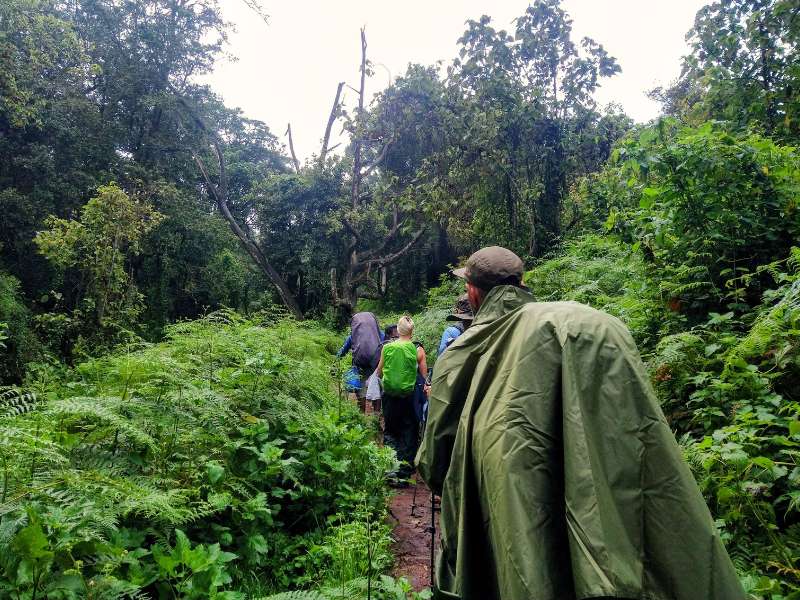
Day 04: Forest Camp to Shira Camp I
Today you’ll leave the giant heather zone and hike through open moorland to Shira Camp I at 11,500 ft (3505 m). Keep an eye out for eland antelope which are sometimes spotted grazing here.
There are also fascinating geological features in the old volcanic caldera that can be viewed during a half-hour optional walk in the afternoon. (Total ascent: 2,000 ft/610 m during 5-6 hours of hiking.)
Walking Distance: 5.0 mi/8.0 km
Walking Time: 5-6 Hours
Elevation Gain: 2,000 ft/610 m
Meals: B/L/D
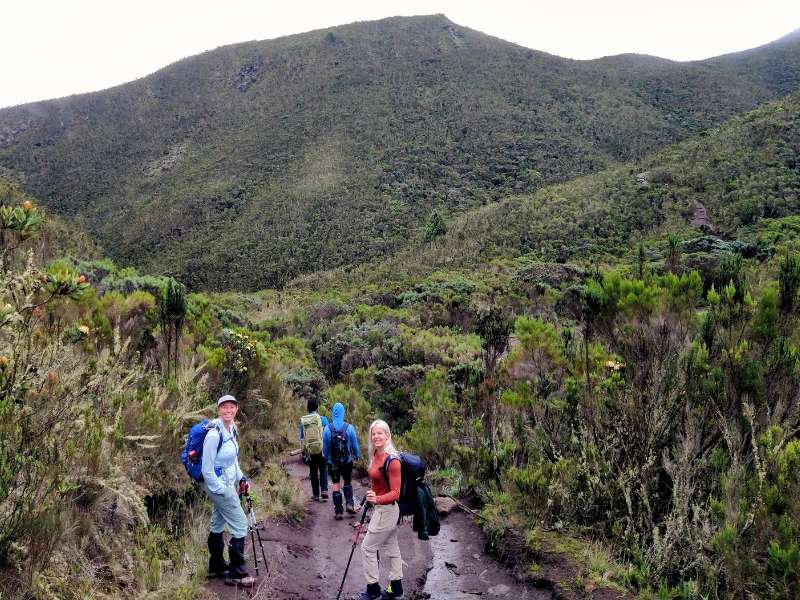
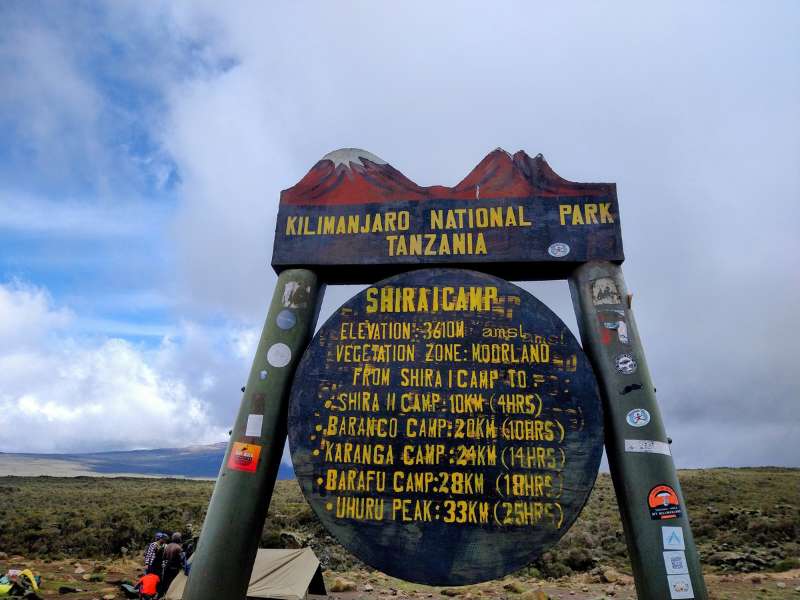
Day 05: Shira l Camp I to Moir Hut Camp
You’ll hike along the Shira plateau for the duration of this day — beginning with a gentle walk east toward Kilimanjaro’s glaciated peak, then winding across the plateau that leads to Shira II Camp in the moorland meadows. You’ll then continue to Moir Hut Camp, a little-used campsite on the base of the Lent Hills.
Walking Distance: 8.7 mi/14.0 km
Walking Time: 6-7 Hours
Elevation Gain: 2,300 ft/701 m
Meals: B/L/D
Day 06: Moir Hut Camp to Lava Tower to Barranco Hut Camp
From the Lent Hills, you’ll continue up a ridge, passing the trail junction towards the peak. You’ll arrive at the Lava Tower geological formation, also called “Shark’s Tooth,” in the afternoon and stop there to enjoy your packed lunch.
After that, you’ll come to a second trail junction, which brings you up to Arrow Glacier at an altitude of 16,000 ft (4877 m). This is an important day to see how you feel at this elevation, the highest, you’ll be until your final ascent to the summit.
You’ll then continue down to Barranco Hut Camp at an elevation of 13,000 ft (3964 m).
Although you’ll finish the day below the level of elevation that you started at, it’s an important step for acclimatization that will help prepare your body for the summit.
Walking Distance: 4.4 mi/7.0 km
Walking Time: 5-6 Hours
Elevation Loss: 800 ft/244 m
Meals: B/L/D
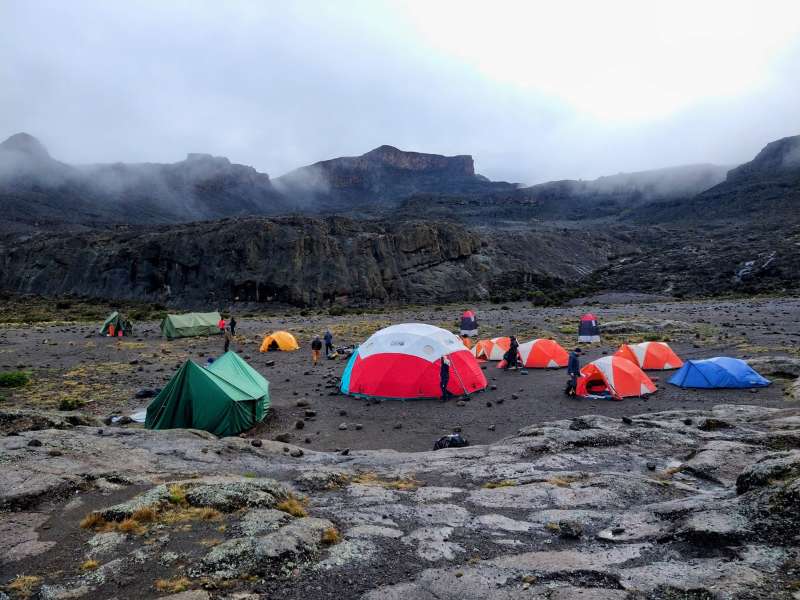
Day 07: Barranco Hut Camp to Karanga Camp
After breakfast, you’ll leave Barranco Hut Camp and continue slowly over a steep ridge, passing the Barranco Wall and ending at the Karanga Valley campsite. This is a short day meant for acclimatization.
Walking Distance: 3.1 mi/5.0 km
Walking Time: 4-5 Hours
Elevation Gain: 100 ft/30 m
Meals: B/L/D
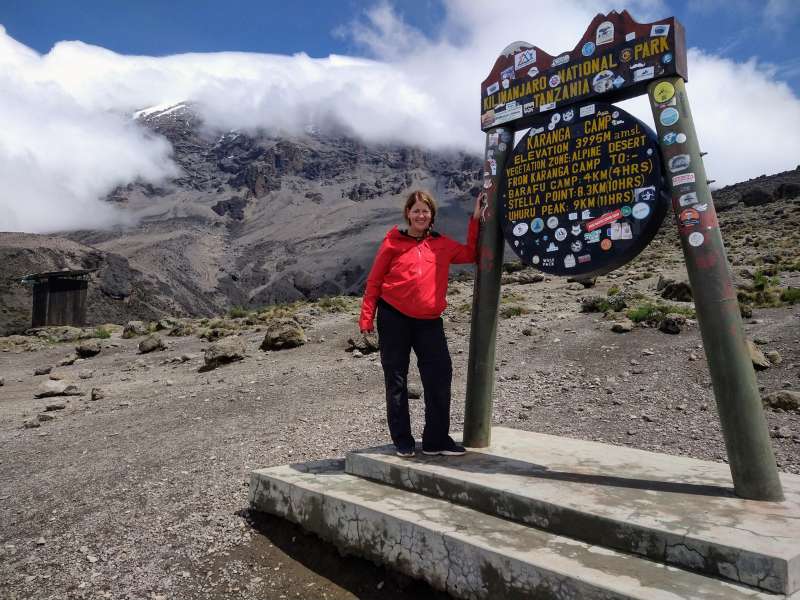
Day 08: Karanga Camp to Barafu Camp
You’ll leave Karanga Camp after breakfast and hike until you reach the the next junction, which connects with the Mweka Trail. You’ll then continue hiking up to Barafu Camp at an elevation of 15,330 ft (4673 m) , arriving in the early afternoon.
Here you’ll make camp, rest, and may do an optional short hike to further acclimatize.
Then, you’ll enjoy an early dinner, and try to get a few hours of sleep in preparation for the final push to the summit this evening.
Walking Distance: 2.5 mi/4.0 km
Walking Time: 4-5 Hours
Elevation Gain: 2,200 ft/671 m
Meals: B/L/D
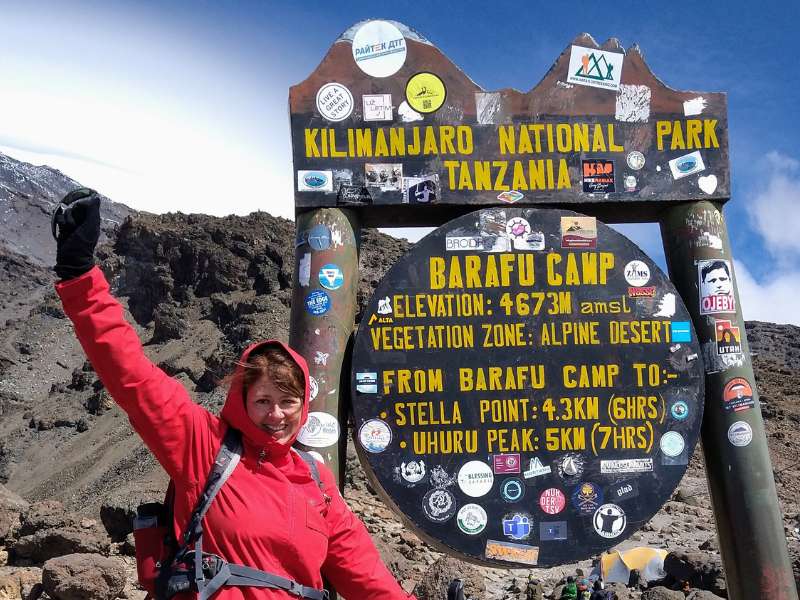
Day 09: Barafu Hut Camp to Kibo Summit to Mweka Camp
You’ll wake up around 11:00 pm (technically still Day 8) and have a light snack before heading out at 12:00 am to start climbing the steep, frozen scree up to the summit with the helping hand of your friendly guide if you need it.
Your goal is to reach Stella Point (on the crater rim) for sunrise, and then it’s a final push to the summit for another hour to find yourself at the highest point on the continent, bathing in the sun’s warmth (much appreciated at that elevation).
After reaching the summit and snapping a few photos, you’ll hike back to Barafu Hut Camp via the Mweka descent route. Here you’ll eat a quick meal, rest for an hour or so before descending further until reaching Mweka Camp at 10,170 feet (3100m), where you’ll spend the night, and enjoy the lower altitude.
Hiking time is ~ 7-8 hours (4,265ft/1,300m ascent) to the summit of Uhuru Peak, then a 6-8 hour (9,186ft/2,800m) descent to Mweka Camp, set in a clearing amongst the giant heather.
This is a long and hard day — you’ll feel extremely tired by the end of it, but also absolutely ecstatic that you’ve accomplished so much. Enjoy your sleep tonight — you’ve earned it!
Walking Distance: 10.6 mi/17.0 km
Walking Time: 13-16 Hours
Elevation Gain: 4,045 ft/1,233 m
Elevation Loss: 9,345 ft/2,848 m
Meals: B/L/D
Day 10: Mweka Camp to Mweka Park Gate to Hotel
You’ll finish up the trek with a 3-4 hour descent through the forest to Mweka Gate to collect your Kilimanjaro Cerfitifcate of Completion and will then be transported back to Arusha. You’ll arrive early afternoon to check into your hotel for some R&R and a celebratory dinner.
Walking Distance: 6.2 mi/10.0 km
Walking Time: 3-4 Hours
Elevation Loss: 4,600 ft/1,402 m
Meals: B/L/D
Day 11: Departure
You’ll have breakfast at the hotel and relax until your flight back. You’ll be transferred by the hotel to the airport (15 minutes drive) approximately 2.5 hours before your flight is scheduled to depart.
Meals: B/L (optional, depending on your flight time)
KILIMANJARO TOUR: LEMOSHO ROUTE INFO:
Climbing Kilimanjaro Price: Lemosho Route
- 1 Person: $4,699
- 2 People: $3,799/pax
- 3 People: $3,499/pax
- 4 People+: $3,399/pax
- All prices are based on double accommodation and are in USD. If you have a larger group size, contact us for rates.
Included:
- 2 nights of hotel accommodation before the start of your trek.
- 1 night of hotel accommodation after your trek.
- Base commissions for all Kilimanjaro guides, porters and other staff (this also helps ensure that we get the best staff since they’re getting a higher salary and not dependent on tips).
- 7 nights of tented accommodation with a premium sleeping mat to ensure your comfort.
- All meals prepared by a top chef while climbing Kilimanjaro (can accommodate food allergies, vegetarian, vegan, gluten-free, etc).
- Private toilet (outhouse) for your group, so that you don’t have to use the public ones which tend to be quite dirty.
- National park fees.
- Porter to carry your 15kb (33lb bag). You only need to carry a smaller day pack.
- A private Zoom call before your departure to answer any questions you may have.
- Gear check to ensure you have everything you need.
Not Included:
- Anything not mentioned above.
- Additional costs for medical care and any extra days of lodging, food, and activities if you require evacuation.
- Travel medical insurance (that includes Kilimanjaro) (we require all guests to have this).
- Trip cancellation and travel insurance (optional, but we highly recommend it).
- Sleeping bag *but you can rent one from us.
- Personal items.
We’re proud to partner with the best safari and Kilmanjaro tour company, Pamoja Safaris, an American and Tanzanian owned company to bring you an incredible Kilimanjaro trip.
I did a safari and Kilimanjaro tour with them in November 2023 and was so impressed with them, I wanted to bring this trip to you. Scott from Pamoja Safarus will answer all your pre-booking and booking questions, while Josh finds the best guides and porters and handles the trips complicated logistics.
You’ll book your trip with them, through their secure booking system and they’ll handle your trip details. You’ll have the best people on the ground planning your epic tour . This ensures that more of your money benefits the local community where you’ll be hiking. But of course, I’m here to help if you need anything.
FAQs ABOUT KILIMANJARO TOUR
Do you offer mixed-group trips or set departure date tours?
No. We only offer custom private trips for everyone from solo travelers to large groups. That way we can custom-tailor your experience to exactly fit your needs. If there’s something in particular you’re looking for, just let us know and we will try to make it happen.
When is the best time to climb Kilimanjaro?
You can climb year-round, but we do not recommend going during the rainy season (mid-March through mid-May).
● January, February, and September are the best all-around conditions.
● July through September is the dry season, but also the coldest. July and August arealso the busiest time on the mountain.
● November through the first half of December sees fewer climbers, but can be rainy.
Despite the above guidelines, it can rain in July through September, and it can be completely dry in November. The weather can change at a moment’s notice on the mountain, so you must prepare for every type of weather no matter when you go.
What’s the best route to take up Kilimanjaro?
There are seven official routes to ascend Kilimanjaro:
● Machame (a.k.a the Whiskey RouteL 7-8 Days)
● Marangu Route (a.k.a the Coca-Cola Route: 5-6 Days), and the most popular route
● Lemosho Route (7-9 Days), the one we recommend
● Shira Route (highest starting elevation)
● Rongai Route
● Umbwe Route (shortest, steepest, hardest)
● Northern Circuit Route (longest, 9-10 days)
In general, the longer you have to ascend Kilimanjaro, the higher the summit success rate is. The shorter routes, such as Marangu, are tougher on your body (longer hiking days) and allow less time for your body to acclimatize to the elevation, which can lead to altitude sickness. There also tend to be more climbers on the shorter routes.
There are fewer climbers on the Lemosho and Rongai Route, and the views from the Lemosho Route are the most spectacular. That, and because of the high success rate, is why we encourage all of our guests to do the Lemosho Route versus the other options.
The new Northern Circuit Route is also a decent option that extends the classic Lemosho Route by a day or two, if you’re worried about acclimizating, or simple want to extend your time on Kili.
Am I too old/young to climb Kilimanjaro?
The minimum hiking age is 10 years old, as set by the Park Service. There is no maximum age to climb Kilimanjaro. We’ve had plenty of guests successfully summit in their 60s and 70s. The oldest recorded summit was by an 89-year-old great-grandmother!
What’s more important than your age is that you’re physically active and have a good level of fitness.
What kind of training is recommended prior to trekking Kilimanjaro?
It’s ideal if you can train and hike at higher elevations, great. However, we know that isn’t possible for many guests. We recommend cardio training such as long walks and runs, swimming, hiking, and biking in order to get into decent physical shape before you start your ascent.
Do you recommend any types of medication or immunizations? Should I take anti-malarial medication?
Most guests make sure that they are up to date on the usual travel inoculations, such as Hepatitis A and B, tetanus, and typhoid.
As far as anti-malarial drugs are concerned, the only areas where mosquitoes are present are on Day 1, Day 7, and Day 8. Most guests opt to not take anti-malarial drugs are the prevalence of malaria being quite low in the area, and the unpleasant side effects of the drugs.
Wearing long sleeves and pants also helps to avoid mosquito bites.
Tanzania requires Yellow Fever vaccinations only when traveling directly from endemic countries, such as Kenya, Ethiopia, or Brazil. (If you only have an airport layover in one of the countries, you don’t have to worry about it.)
Please consult with a qualified medical specialist regarding travel vaccinations and medicine.
Do you recommend taking Diamox pills (acetazolamide) to help with altitude sickness?
We strongly recommend that any guest who isn’t allergic to sulfa-based drugs at least have acetazolamide with them in case they need it. We have seen definite increases in summit success rates and decreases in altitude sickness in those who start taking prophylactic doses of 125mg acetazolamide twice a day starting the day before the hike begins.
Minor side effects of taking acetazolamide include loss of appetite, more frequent urination, and a tingling sensation in your fingers and toes.
Please consult with a qualified medical specialist before taking any medication.
What are the symptoms of acute altitude sickness (hypoxia)?
The number one cause of guests not reaching the summit of Kilimanjaro is altitude sickness (also known as hypoxia or AMS). Symptoms of altitude sickness include difficulty breathing, loss of sleep, loss of appetite, nausea, vomiting, and in rare severe cases, even death.
All our guides are trained to recognize the signs of altitude sickness. If they decide that you are no longer in any condition to continue the hike, then you must start your descent (on your own with a guide, or another staff member if you are able – otherwise, a guide with a team of porters will escort you down via rolling stretcher).
In certain situations, helicopter rescue may be an option (for an extra fee), but even when rescue is possible the helicopter is not always available.
How much do I/we tip our mountain team?
Unlike many other companies, we include a generous base gratuity in our pricing structure. We do this because it encourages the very best talent on the mountain to work with us and stay with us for the long term. We’ve found that having happy, well-paid, and well-fed staff leads to a much better experience on the mountain for our guests and team alike.
Many guests choose to bring small bills to give a bit extra to team members who were especially helpful during their hike. (Note: do not bring more than $200/person [or equivalent] cash with you on the mountain, as is not allowed by park rules in case of loss or theft).
What type of gear should I bring with me?
We have a full list of recommended gear in our Kilimanjaro Packing & Preparation guide.
I’d like to arrive early in order to better acclimatize to the elevation and jetlag before the trek. How much does it cost for extra nights?
We can arrange for extra nights at the cost of $150/person for shared rooms, and $200/person for solo travelers, including three meals per day.
Activities during your extra day(s) (hikes, safaris, etc.) may be arranged at extra cost.
I’m looking to fly out on the evening of Day 10. Is this possible? If so, does this make the itinerary cheaper?
We highly recommend staying through the evening of Day 10, as you’ll be quite exhausted and in need of rest once you get off the mountain. This extra time also allows for some leeway in case of any unexpected incidents that require time to resolve.
However, if you must fly out that evening we can arrange for a day-use room near the airport that you can use to shower and change in before your flight.
The pricing of the itinerary does not change if you choose to fly out a day early.
Is it possible to skip Day 2 (Preparation Day) and just fly in and start the trek the next morning? If so, does this make the itinerary cheaper?
We highly recommend including Day 2 in your itinerary because it allows for leeway in case your flight is delayed or canceled or your luggage is lost.
It also allows for time to check your gear with your lead guide before the trek and to rent anything that is needed. Plus, it helps your body cope with the fatigue and jetlag after a long flight, making your Kilimanjaro hike more enjoyable.
However, if you are scheduled to arrive in Tanzania in the morning or early afternoon of Day 1 we can work with you to make sure you are ready to start the ascent the next morning.
The pricing of the itinerary is reduced by $100/person if you choose to skip the recommended preparation day.
What happens if I get sick, injured, and/or am not able or willing to continue my hike? Do you give refunds?
If you need evacuation off of the mountain we will do everything in our power to safely get you down from the mountain. From there you’ll be taken to a lodge, or to the hospital, as needed.
There are no refunds given in the case of a canceled hike, as everything has already been paid in full for the entire duration of the hike at the point the trek starts, including the national park permits.
Please note that all extra costs incurred (transportation, lodging, meals, hospital visits, etc.) must be paid by the guest. (Most charges resulting from early termination of your climb should be able to be claimed via your travel insurance.)
Can I climb Kilimanjaro if I have a medical condition?
Always check with your doctor or medical professional first and bring medications. Also, alert us of any medical issues before you start your hike.
Can you accommodate my food allergy or preference?
Yes. We have a top chef and can accommodate vegetarians, vegans, gluten-free, etc. Please check with us before you book,
